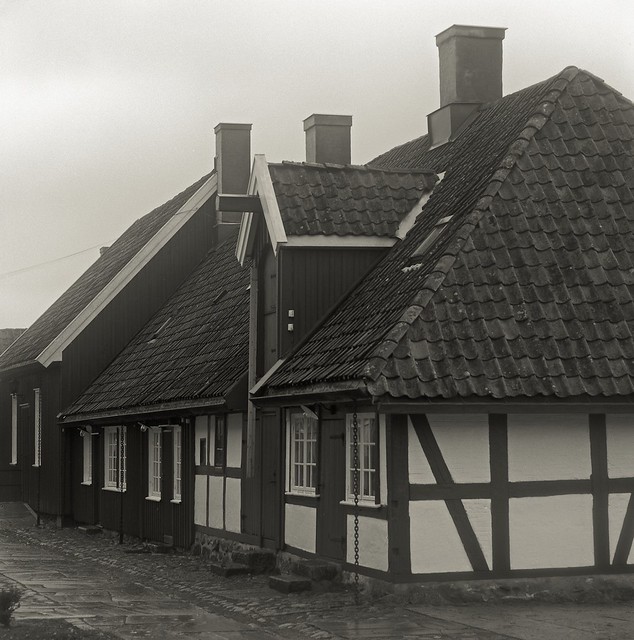Ezzie
E. D. Russell Roberts
I´ve been experimenting with Caffenol-C-H lately. Caffenol.blogspot.com has a number of Caffenol recipes for different applications and for stand or agitation development. Common to the all is that they are meant to be speed enhancing (to a lesser or greater degree) and are also good at salvaging highlights and shadow areas.
Anyhow, I can´t be bothered with stand development, so I went for Caffenol-C-H which should work with medium to medium fast films and agitation development. Over on APUG and the Scandinavian forum there´s been a lot of experimenting with Caffenol and different films. Being a homebrew developer there aren´t that many good sources for different films and development times. With a bit of trial and error I´ve ended up developing TMAX 100 (exposed as EI 100) for 18 minutes at 20C. I tried shorter development times to begin with and got usable results, for scanning that is. They were thin, but perfectly salvageable. To make things easier for myself I´ve diluted the different ingredients in water to the required strength for mixing. I need only mix them together when developing. This also helps avoid any debris from undissolved chemicals. As a clearing agent Potassium Bromide is used. I use slightly less than the recommended 1g/l, which works fine for scanning.
I find the scanning and post-processing easier than with the rather thick TMX and TMY-2 negs developed in TMAX developer. However the contrast is slightly less pronounced. But control of highlights and shadows is very good. Without a better scanner its difficult to see if there´s more or less grain, but from what I can see its not bad in that respect. I like the tonality too.
Some examples shot with a Kowa Super 66, 12 on 120.






Anyhow, I can´t be bothered with stand development, so I went for Caffenol-C-H which should work with medium to medium fast films and agitation development. Over on APUG and the Scandinavian forum there´s been a lot of experimenting with Caffenol and different films. Being a homebrew developer there aren´t that many good sources for different films and development times. With a bit of trial and error I´ve ended up developing TMAX 100 (exposed as EI 100) for 18 minutes at 20C. I tried shorter development times to begin with and got usable results, for scanning that is. They were thin, but perfectly salvageable. To make things easier for myself I´ve diluted the different ingredients in water to the required strength for mixing. I need only mix them together when developing. This also helps avoid any debris from undissolved chemicals. As a clearing agent Potassium Bromide is used. I use slightly less than the recommended 1g/l, which works fine for scanning.
I find the scanning and post-processing easier than with the rather thick TMX and TMY-2 negs developed in TMAX developer. However the contrast is slightly less pronounced. But control of highlights and shadows is very good. Without a better scanner its difficult to see if there´s more or less grain, but from what I can see its not bad in that respect. I like the tonality too.
Some examples shot with a Kowa Super 66, 12 on 120.






Last edited:








